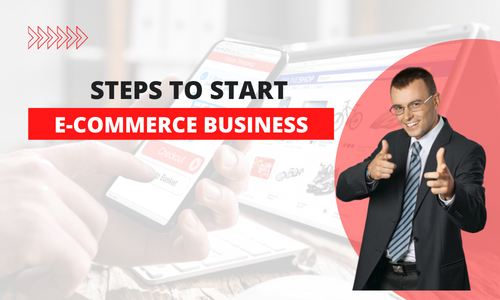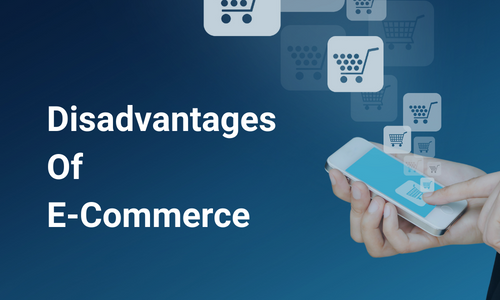
Every company has its own definition of achievement and success. It is not a consistent criterion or a standardized system for success. The Rule of 40 has recently become famous and essential for analyzing the operating performance of any company for revenue growth.
The Rule of 40 is a simple rule for analyzing the health of a SaaS business or SaaS software to see the revenue growth rate, focusing on two company aspects – Growth and profit.
Content
Investors and buyers use this Rule of 40 to measure any company’s growth and profit under SaaS. For measuring the trade-off between growth and profit, the Rule of 40 maintains that SaaS software companies target their growth and profit margin by adding up to 40% or even more.
The Rule of 40 is considered a rule of thumb to analyze the health of any business related to SaaS to assure rapid growth. It is a simple rule that looks at two aspects of any company: growth and profit. A simple formula can calculate it:
GP RATIO = GROWTH RATE + PROFIT
This formula means that your growth rate and profit should add up to 40%. The total sum should be equal to or more than 40%. If you are doing 40%, you have good growth and are running a healthy and stable business. And if you are getting more than 40%, your company is moving in the right direction.
It is feasible to use the Rule of 40 when comparing different SaaS companies as per the business model. With this Rule, the health of a SaaS company can easily be measured. Individual health can be measured along with the proper comparison with different companies.
This Rule helps business owners (investors and buyers) to analyze the important factors (growth and profit) before getting into any business. A company can use different strategies to reach 40% easily.
People are still confused about whether they should rely entirely on the Rule of 40 or not. Whether the Rule of 40 can decide the financial health. There are some reasons why the Rule of 40 is quite effective:
When you are talking to investors, you know how to get them attracted to you. You can present the calculations using the Rule of 40 to show your company’s growth, operating income, professional services, sustainable rate, financial metrics, sustainable growth, growth percentage, and overall performance. The company’s health can easily be calculated and measured using the Rule of 40.
By using the Rule of 40, companies are more focused on creating a healthy balance between company growth potential and profit. They understand that these aspects should go hand in hand, and one cannot get priority over the other. The future growth of the company is taken into consideration too.
The company knows its growth and profit rate with a proper focus on the Rule of 40, and it helps carve a basis for comparing profit and growth. This focus doesn’t let them fail and close their business altogether the company considers the factors involved in the Rule of 40 to keep moving forward with a growth rate percentage.
Any business cannot stay healthy and successful without proper diagnosis. The best way to move forward and stay successful is to recognize the problem becoming a hindrance to your success. Potential investors get attracted to your business if you work on your growth and profit margin.
Initially, the Rule of 40 was applied only if the company exceeded $50 million in annual revenue. The pioneer of the Rule then recommended applying this Rule if your company has reached $1 million in annual revenue. Many SaaS companies use this Rule when their revenue reaches $1 million in ARR.
A rule of 40 is one way to measure the health of any business. The Rule of 40 is quite simple and easy and helps in knowing the growth over profitability ratio and helps in the annual growth rate. The only thing to consider is whether your business needs to use this Rule or not. It helps you determine the standings of your business and growth rate too.
Related Articles:

Online shopping used to be a luxurious thing in the past, but now it is very common and necessary for some people. Online shopping is easy for people because they can purchase things at home. It is neither difficult nor easy to start an eCommerce business, but if you follow the right steps.
Content
This article will explain the steps involved in successfully creating an eCommerce website.
Research is the initial as well as crucial step for any business. There are different models for selling different products. One specific structure cannot work for every sort of business. Before jumping into the eCommerce world, first, you need to understand the eCommerce business models in detail. Online businesses are hard to run due to different problems, but a suitable model can ease many problems and help you get potential customers and reach your target audience.
Trade of all is master of none. Therefore, it is really important to choose your niche. It is better to specify the niche you want to work on. It is suggested to research and check successful companies for product ideas. The niche you choose should be competitive, but it should not be overly crowded. You can skip the things dominated by the top brands because people are most likely to go for the top brands. The type of products you want to sell should be specified when considering the business idea.
After proper research, you go into your business model and identify a niche to work on, now is the time for product hunting. You need to ask yourself a few important questions:
In the start, it is suggested to keep your profile low, and you may send traffic to Amazon regarding a specific product; if that thing catches fire, you can start your brand by selling that product. It is essential to test the product before investing a large sum of money in it. This backup of affiliate marketing will help you validate your thought and let you practical experience your idea.
For starting a good and successful business, it is important to catch a brand that automatically connects with your persona. There are some basic baby steps within step 4 to move in the right direction.
First, choose your brand name and get your company registered officially. The registration process includes all tax benefits and legal protections, so you should always take it.
Choosing the same business and website name is not mandatory, but you may get some benefits if they are the same. Your brand name should be linked with your chosen niche.
Getting a business license is considered one of the vital steps in any business and especially the eCommerce business.
The EIN is important for opening a business bank account because it also has all your employees’ business taxes and details. It is a unique number for every business, differentiating businesses from each other.
You can only run an online store with certain licenses and permits. Your city, country, and certain things are checked for sales tax licenses and permit required to run any eCommerce business.
Your logo is your symbolic identity and needs to be creative and unique. You should not copy the logo of any other brand.
Another important part is selecting the colors and contrasts for your brand, the type of font, and its size. Hiring a marketing firm that can create a unique and attractive design for your website is also suggested.
A business plan is another key element to running the business. Following your brand, niche, and target market, you can finalize your business plan. Business plans should be written on paper to finalize the startup budget, monthly expenses, and other loan needs. There are a few important elements of the business plan:
Finance is an integral part of starting any business. Business owners need to set a specific time for revenue and calculate expenses. It is also mandatory to determine the profit margin for a successful business. This stage includes logistics, product sourcing, employees, overall budgeting, etc.
Some eCommerce business owners prefer to stock up their inventory for selling online, but there is also a way to use fulfilment centers for handling your inventory. It is better to keep the physical products for a fast delivery process.
Moreover, the inventory software also helps organize and settle things. All the details remain safe using the inventory software.
The next crucial step is to register the domain name. Website design needs to be finalized, and you will finally get to build your online store. There are several eCommerce platforms available online, and you can choose one that is easy for you to use. It is better to properly research and then finalize the eCommerce software because good software provides good compatibility, web developer skills, loading speed, SEO-friendly aspects, the best customer experience, and much more.
A marketing plan is another challenge for businesses. SEO should be taken into account while uploading the content on your website. Successful eCommerce business always cares about search engine optimization. Secondly, you need to choose your marketing strategy. It can be traditional marketing or digital marketing. Digital marketing involves social media marketing. The marketing strategy is not static; you can easily change it with the changing needs of your eCommerce business and as per the market analysis.
Now is the time to start your business and sell your products online to earn profit. Have you followed all seven steps? Now, what are you looking for?
Related Articles:

Although there are many pros of E-commerce, however, you will also see some disadvantages of E-commerce. The idea of online shopping and online stores is exciting and difficult. Ten of the disadvantages have been discussed below:
Content
Security and safety have been the chief drawbacks of e-commerce stores. Hackers and cybercriminals are out there who make E-commerce vulnerable and unsafe at times. They pose a potential threat to your online accounts, and they can extract all the money from your account if you commit minor negligence. To stay protected, you should remain highly proactive and wakeful.
E-commerce business relies on the internet. Therefore, another disadvantage of e-commerce sites is site crash, which significantly hinders buying and purchasing activities. Even a tiny site crash can pause the whole business within no time.
The customers must wait to test and try the product beforehand. We are habitual in buying the products from stores after checking, touching, testing, and trying them quite a few times. Hence, it requires a lot of confidence and guts to shift attention from physical stores to e-commerce platforms. Moreover, customers always need more time to buy products online. They are suspicious about the quality of the product and remain hesitant before purchasing it online.
One more disadvantage of e-commerce websites is the delay in delivery. We usually see the delivery time will be seven days. However, it exceeds seven days in most cases. The customers keep on endlessly waiting for the products. In some instances, the products never get delivered.
There are also some cases in which the customers have to wait for several minutes/hours outside their houses to receive the parcels. This happens when the courier company needs to give a specific time for delivery.
Although we can buy a lot of stuff online, we may prefer to buy only some things online. For instance, customers don’t want to buy gold, silver, diamond, spectacle, ice-creams, etc., online, even if they have the option to buy such products online. We almost always need sureties – physically see, touch, check, and test such products before purchasing. We don’t want to risk our money on such expensive products by getting an online shopping experience, even if the seller gives dozens of sureties.
One more disadvantage of e-commerce is the lack of privacy. Whenever we make online transactions, we give our names, phone numbers, email ids, addresses, card details, etc. This information contains sensitive information and can pierce our privacy. It gets hard to trust online retailers. Some sites do not facilitate the users with effective encrypted technology; hence the information, if leaked, can be illegitimately used.
Many laws have been introduced for the protection of both sellers and buyers for online purchases. To create any website and smoothly conduct activities, it is necessary to go through both local and cyber laws. One of the problems regarding laws arises when people don’t focus on both cyber and local laws. Paying attention to one law and ignoring the other does not make our business successful.
Online presence has another significant disadvantage of huge technical costs. It needs well-organized and effective platforms to ameliorate its performance. The proper technical tuning is hugely expensive and requires a lot of investment. It also needs continuous upgradation to stay up to date with time. However, the massive cost of technical issues is a disadvantage of e-commerce. When any network, software, and/or domain disturbances occur, e-commerce doesn’t work smoothly.
E-commerce has the advantage of selling and buying products without going outside of stores. It can buy and sell any product anywhere, ship it everywhere, and ease the customer’s shopping journey. Usually, the customers buy any product from stores and leave the stores with the products in their hands; but in e-commerce, they have to wait for the shipment at their houses. If the infrastructure is unclear, it will seriously disadvantage e-commerce.
E-commerce involves marketing efforts, messages, and strategies that need technically good, qualified, talented, and well-trained staff, which is the cause of high labour costs. Only a competent and talented team can engage with the transactions well. However, colossal labour cost is yet another disadvantage of e-commerce.
The popularity of eCommerce has made many people shift to online business, but this is a complex task. An eCommerce store owner needs to keep all the cons of an eCommerce business before delving into it. There are a lot of challenges that one can face.
Related Articles:

Behind all the conveniences offered by e-commerce, a few side effects can be a real problem for some people. If you do not know how to deal with them, you will lose many customers and even more money. So you should have to manage these challenges before starting your online business.
Content
When someone visits an eCommerce store and signs up to buy some product, you need to be sure that he is a legit person. Sometimes fake people or bots can also purchase via eCommerce, leading to loss, especially cash on delivery purchases.
It is important to take proper measures to check whether the person signing up is legit or not. With the purchases using COD service, the service provider can call the customer to confirm the order first, along with the delivery address to verify.
A customer can contact you via any medium like Facebook, Email, Phone number, or other social accounts. Therefore, eCommerce retailers need to provide an omnichannel experience to their customers by providing the same contact information through all social media platforms.
It is essential to develop an omnichannel strategy by considering customer needs. The key channels should be identified keeping in view the preferences of customers. Then, those channels should be integrated into your official website.
Ecommerce is quite competitive as the success of any business depends on different parameters like service, cost, operations, quality, etc. it is essential to create and maintain a good customer base to stay in line.
To stay in the competition, you should research other similar sellers to see their strategy and website traffic. It is also suggested to initiate promotional offers to attract customers.
With the changing times, the behavior and pattern of buying products are changing. Customers have their own specific needs to purchase particular products online. An eCommerce business needs to see and analyze customer needs and buying patterns.
You can offer your products on eBay, Amazon, or other eCommerce websites with massive traffic. When people try your product, they will directly visit your site to buy it.
The customer leaves the cart if the checkout process is lengthy and full of bugs. Ecommerce business providers must focus on making the checkout process easy for customer retention.
You should work towards removing the bugs and forming a creative and easy-to-use checkout process without any lengthy forms. The new users should be given the option to check out even without creating an account.
No business can flourish without customer loyalty. Maintaining customers in any business is essential. Communication could be more interactive in eCommerce stores. But this can be solved through proper time and effort.
Your customer services need to be effective and quick. However, you need to create good content to retain customer retention. The address, contact numbers, and details should be provided on the official page.
One of the most irritating problems of online shopping is the return and refund policy. Hassle-free return retailers have been liked by customers a lot. At the same time, any product return ends up losing the business.
Your policies should be mentioned clearly, so all the customers can easily see them. A simple step-wise process should be mentioned in plain English. The return rules should also be mentioned so that everyone cannot apply for a refund.
Consistency is an essential element in doing any business. Customers prefer checking various platforms before buying a product. Therefore, you should post on every present channel to show your presence.
Ecommerce businesses can optimize their online work to provide different options to the customers to check and get feedback.
Price difference affects the eCommerce business a lot. If a customer is getting the same product from any other store at a low price, then the customer would prefer that instead of buying a costly product.
The first thing is to maintain your quality and get reviews from your customers. The customer will trust the reviews and good quality products despite any price differences from competitors. Moreover, you can also choose unique products that the customer cannot easily find anywhere else.
Security issues are important for all eCommerce businesses. Hackers can hack the system to get your customers’ content details, addresses, and card details. Some common security issues are DDOS, DOS, Spamming, and malware. Security should be strict and properly managed to avoid any worst-case scenario of professional hacking.
It is better to manage your servers instead of taking help from some external entity. And also employ cyber security experts to handle all such intricate issues. Moreover, the details of online passwords should be changed frequently to avoid any such security loss.
Customers have plenty of options to choose from. If customers have many options, it is hard to be sure they would pick you only. Customers like to do some research before buying anything online.
It is suggested to partner with those companies who help in targeting the customers. Traditional marketing is not in trend, and people are moving towards digital marketing now to get to the target customers.
Customer experience is an essential part of the eCommerce business. Customers expect a level of smoothness and flow while shopping online. All the products should be arranged appropriately and placed in their respective category to provide ease to the customer.
It is suggested to design a simple and clean website, so customers can easily navigate and choose the products they need. Everything should be placed in its respective slot, which will automatically help people in buying their favorite products.
This choice can make or break your business easily. Your chosen agency or technology partner says much about your current and future success. Good technology is the base of a successful eCommerce business, so it should not be ignored.
The right technology partner should be chosen. Before choosing any technology partner for the eCommerce business, thorough research should be done. Technology experts use data science and image recognition for better customer and eCommerce experience.
Some eCommerce websites only deal with a specific geographical area and region and provide information in only one language, making it hard for a larger audience to read and shop. The difference in tax, price, and shipping across borders is time-consuming and costly for shoppers.
eCommerce businesses need to use a multilingual website that can be translated into different languages per the customer’s choice. There should also be an option for converting currency, using technology to help customers buy different products easily.
Marketing is essential for any kind of business. Digital marketing is in trend due to its flexibility. With a few clicks, people get to know about your business and quickly check your products.
Your business marketing needs social media and digital ads to reach a larger audience. You can also hire a professional social media manager for marketing purposes.
The eCommerce industry also has its problems and challenges. Therefore, you need to understand them and find ways to overcome those challenges. The first and foremost step to solving any problem is highlighting and understanding it.
Related Articles: